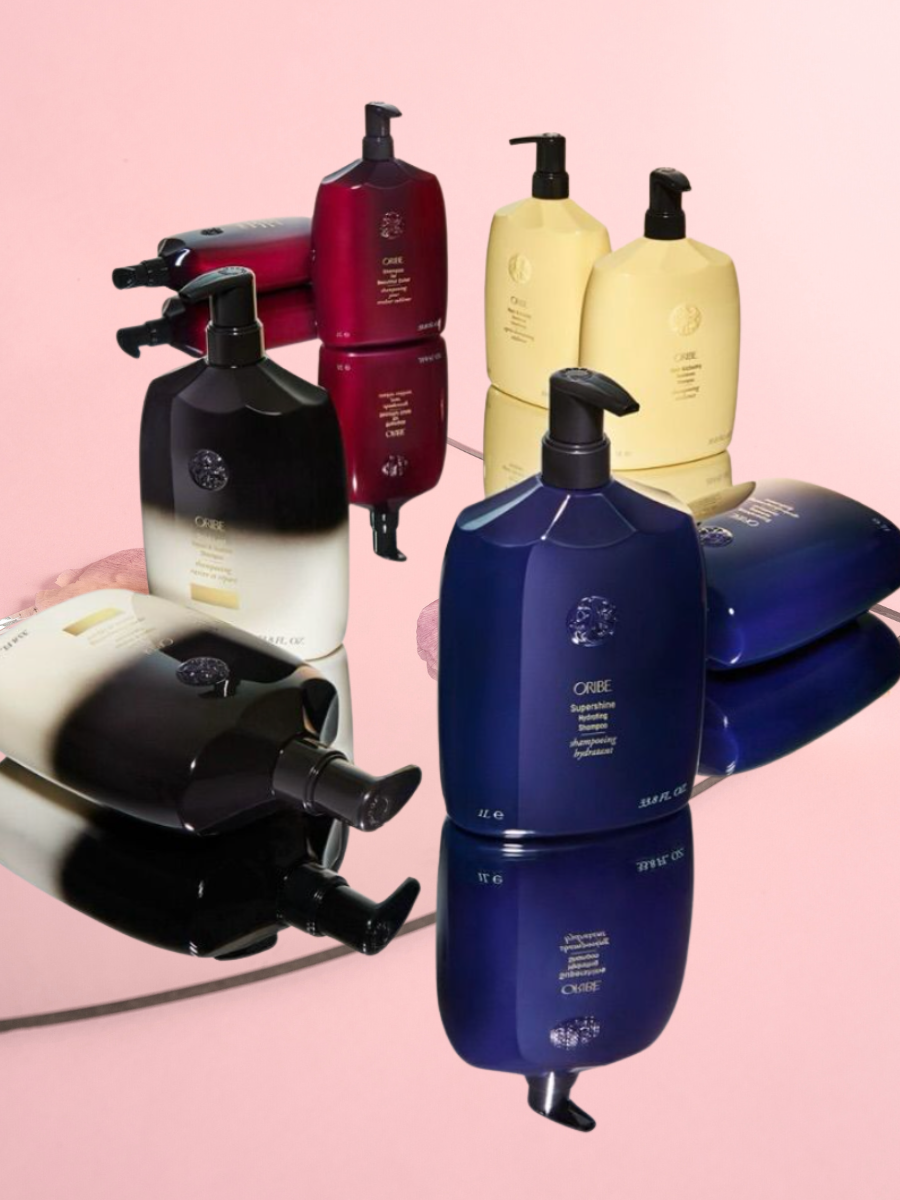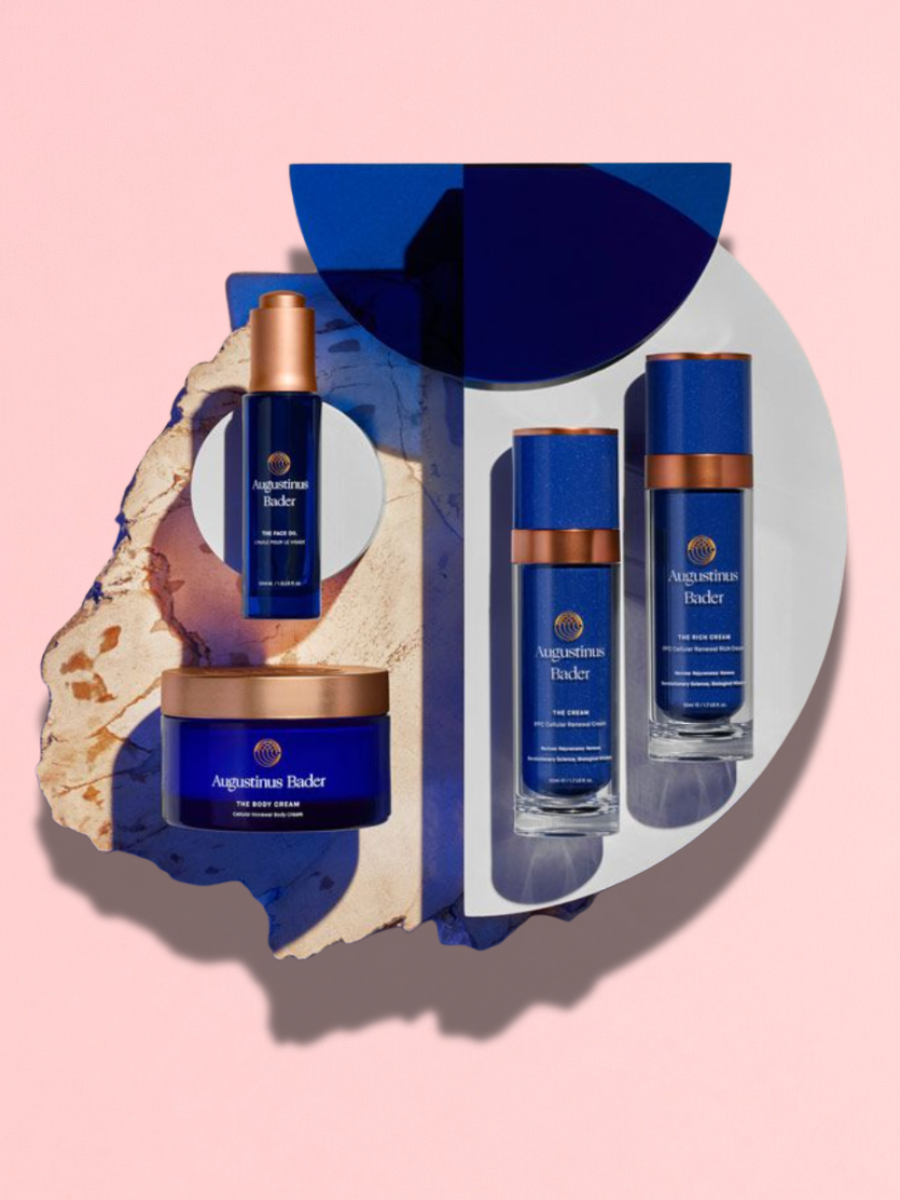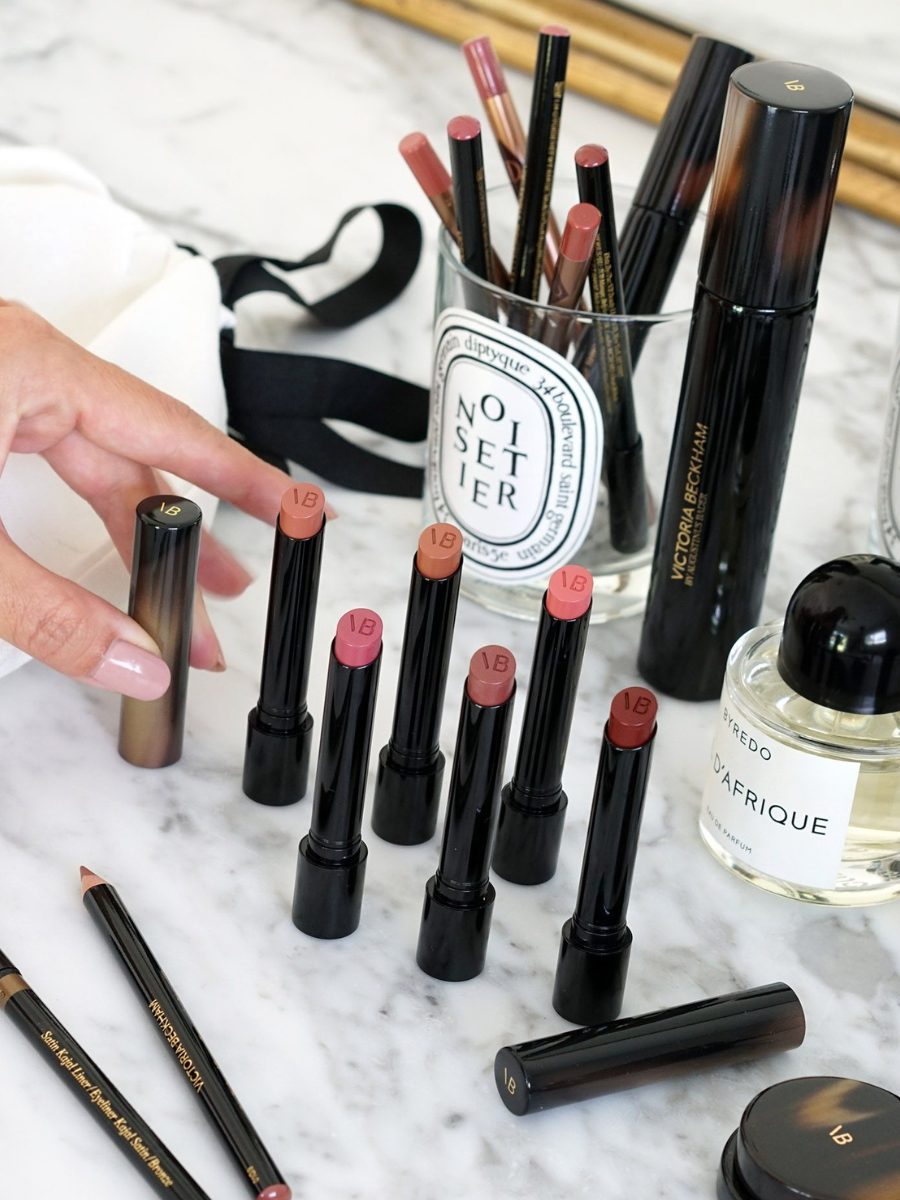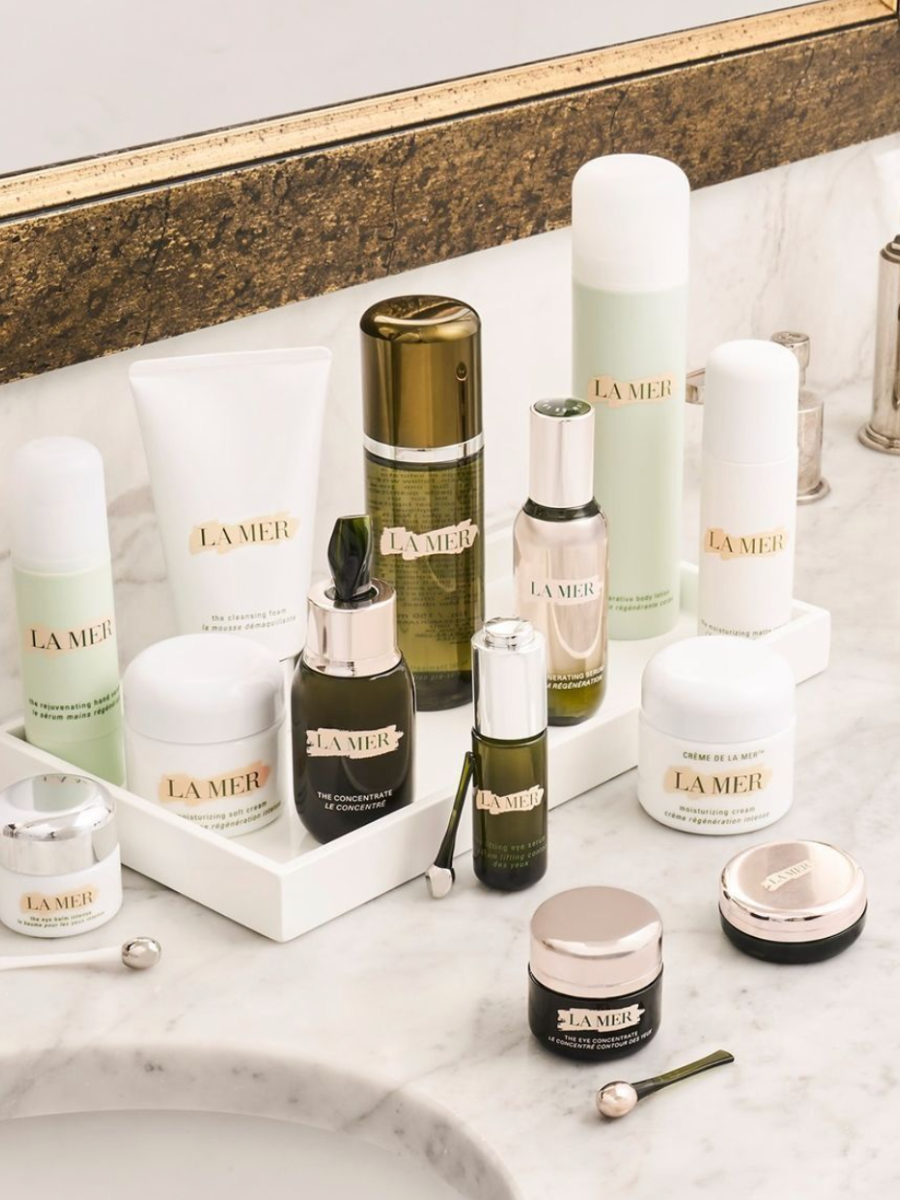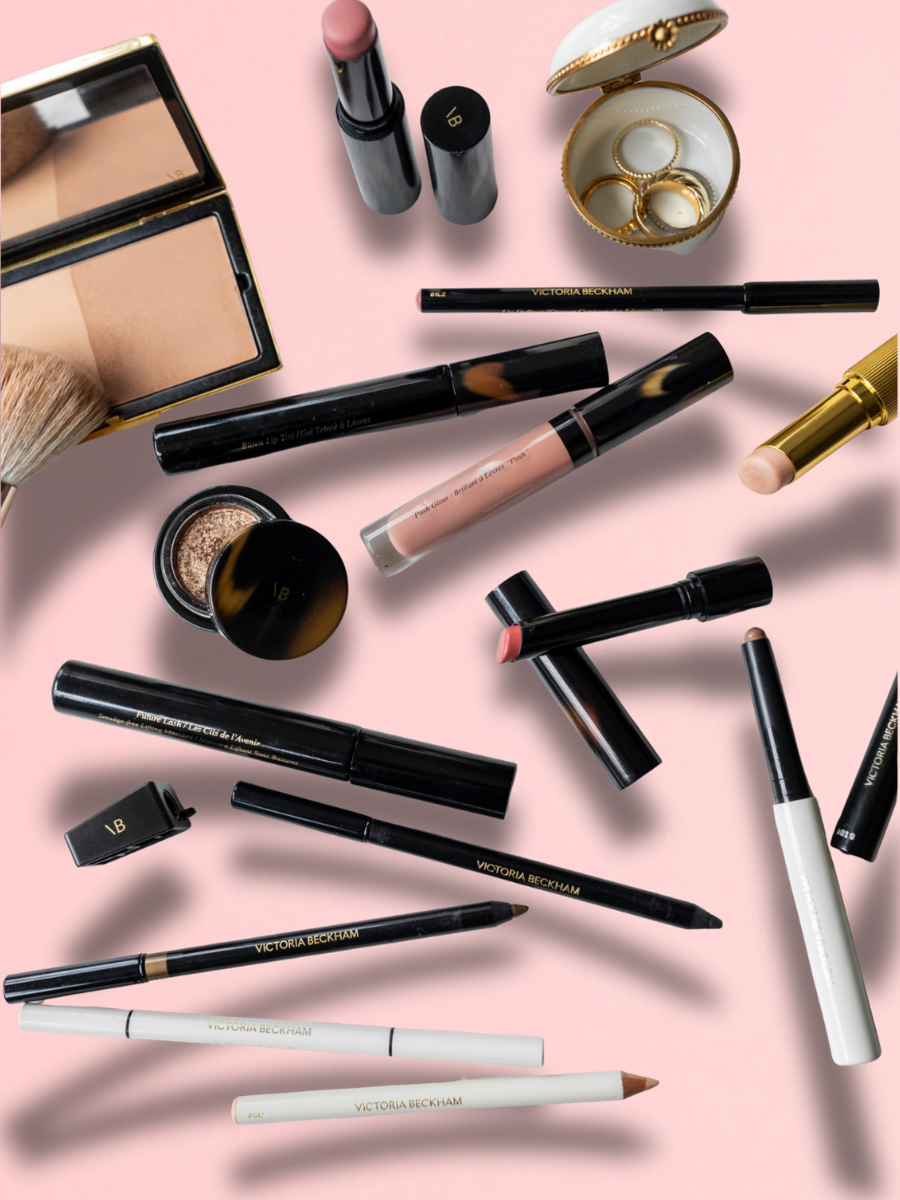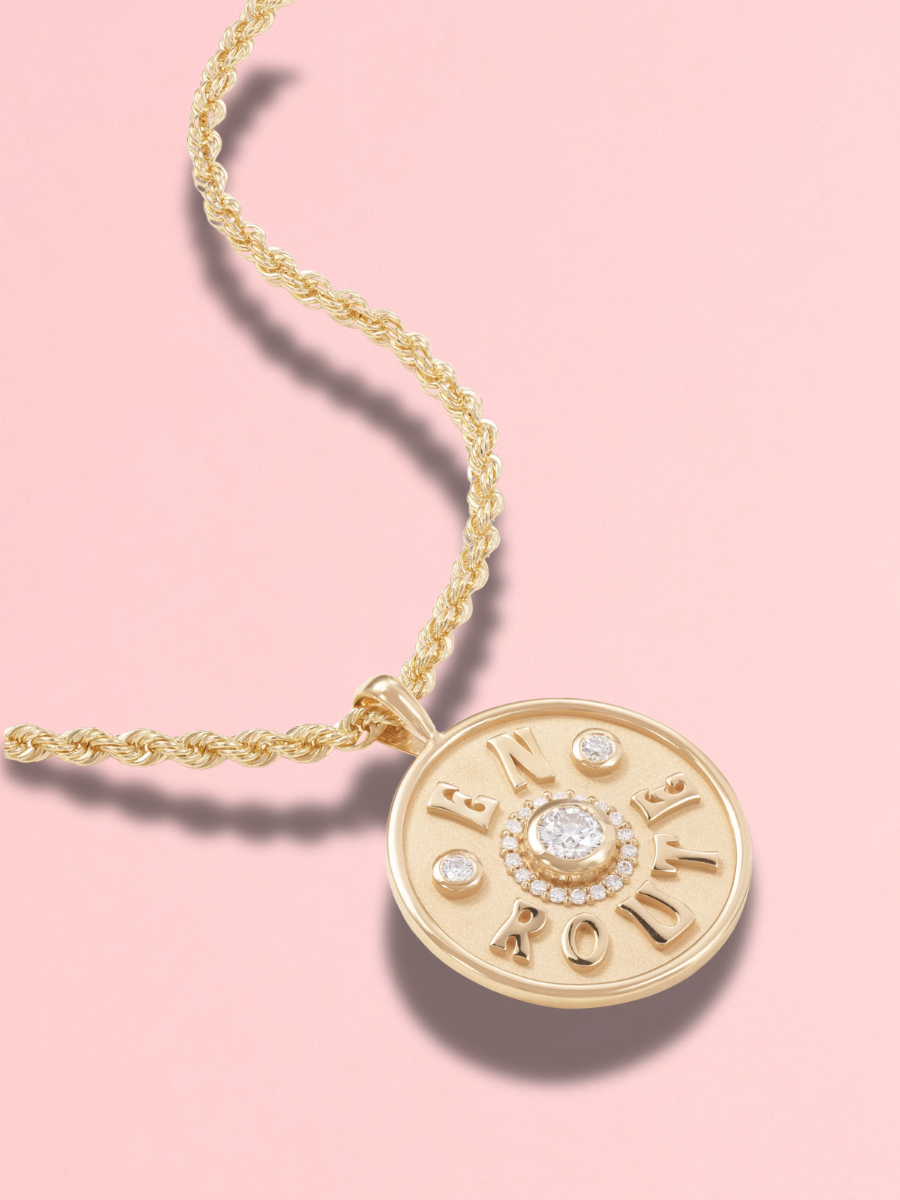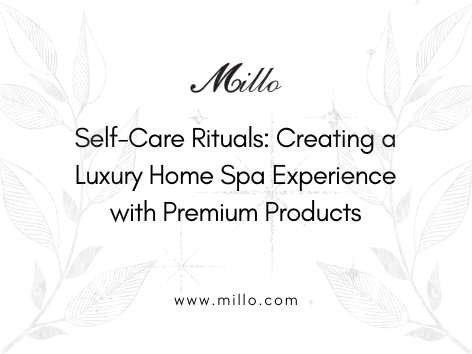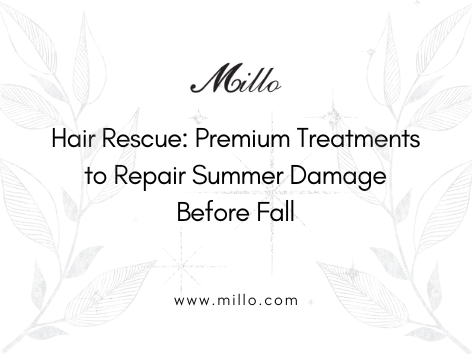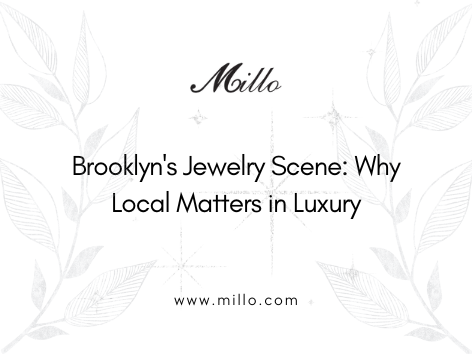Key Takeaways
- Transform any space into a personal wellness sanctuary with strategic lighting, sound, and scent elements tailored to your needs
- Invest in multi-sensory premium products that deliver both immediate relaxation and long-term wellness benefits
- Customize your self-care rituals based on specific goals—whether stress relief, energy boost, or deep rejuvenation
- Incorporate mindfulness techniques to elevate physical treatments into holistic wellness experiences
- Sustainable luxury is increasingly important, with eco-conscious options now available across all home spa categories
Ever noticed how time seems to slow down when you step into a luxury spa? That sense of calm washing over you before any treatment even begins? You don't need to book an appointment or spend hundreds on a single session to experience that feeling. With thoughtful selection of premium products and intentional space design, you can transform your bathroom—or any room—into a personal sanctuary that rivals high-end spas.
The numbers tell the story of our collective shift toward home wellness. The U.S. spa products market reached an impressive $11.27 billion in 2024 and is projected to grow to $15.17 billion by 2030, according to Grand View Research. This surge isn't just about accumulating luxury items—it represents a fundamental shift in how we view self-care: not as an occasional indulgence, but as an essential ritual for maintaining balance in our increasingly demanding lives.
This guide isn't just about creating a pleasant bath experience. It's about designing intentional rituals that combine environment, premium products, and mindful routines to support your deepest wellbeing. Let's discover how to elevate everyday self-care into an art form that nurtures body, mind, and spirit.
The Modern Self-Care Movement: Redefining Rituals
The Cultural Shift Toward At-Home Luxury
Remember when "self-care" meant basic hygiene and maybe an occasional face mask? Those days are long gone. Today's approach to personal wellness has evolved dramatically, with luxury becoming both more accessible and more integral to daily routines.
This shift is evident in market data. In 2023, the U.S. spa industry generated $21.3 billion in revenue with consistent year-over-year growth, according to SharpSheets. Even more telling: spa visits totaled 182 million in 2023, with an average spend per visit of $117.20. That's a significant investment in wellness that many consumers are now looking to make more efficiently through premium at-home options.
What's particularly noteworthy is how demographics have expanded. Once primarily targeted at women, spa culture has become increasingly inclusive. In 2023, 49% of spa customers in the U.S. were male, reflecting broader acceptance of self-care across gender lines. This inclusivity extends to home spa rituals, with product lines now catering to diverse preferences and needs.
Understanding the Appeal
Why are we collectively investing billions in wellness? The answer lies deeper than the pursuit of relaxation or beauty. According to 2023 data, 80% of U.S. spa-goers prioritized mental wellness and stress relief above all other benefits. This statistic reveals the true motivation behind the luxury self-care movement: in an era of constant digital connectivity and mounting pressures, we're seeking sanctuaries—physical and mental spaces where we can truly disconnect and recenter.
What makes people seek luxury in self-care specifically?
For many, premium products represent more than status. They embody attention to detail, quality of experience, and effectiveness that mass-market alternatives often lack. When you're creating a ritual meant to counter stress and restore balance, every sensation matters—from the weight of a plush robe to the complex notes in an artisanal essential oil blend. The premium experience isn't just about indulgence; it's about ensuring that your self-care actually delivers the transformative results you seek.
Curating Your Home Spa Setup: Foundations of Luxury
Designing the Ultimate Space
The most beautiful products lose their impact in an uninspiring environment. Creating a true sanctuary starts with thoughtful space design—and you don't need a bathroom renovation to achieve it.
Start with the senses:
-
Lighting: Harsh overhead lights instantly break the spell of relaxation. Invest in dimmable fixtures, candles in hurricane glasses, or smart bulbs that can shift to warmer tones. Many luxury spas use lighting at around 2700K (warm white) to induce calm.
-
Sound: Background noise from household appliances, street traffic, or family activities can prevent full immersion. Consider a small Bluetooth speaker for nature sounds or instrumental music, or invest in a white noise machine to mask disruptions.
-
Scent: Perhaps the most powerful sensory element, fragrance instantly transforms a space and triggers emotional responses. Rather than synthetic air fresheners, look to premium fragrances like Diptyque candles, Fornasetti diffusers, or natural essential oil blends.
-
Touch: Texture elevates every interaction. Think plush bath mats that cushion tired feet, ultra-soft towels in multiple sizes, and perhaps a dedicated relaxation chair or cushion where you can unwind before or after treatments.
Design tip: Create an adjustable space that can serve different purposes by using storage solutions that conceal everyday items during spa time. A beautiful wooden bath caddy, decorative containers for cotton pads and tools, and dedicated storage for your premium products keep the environment feeling intentional rather than cluttered.
Must-Have Premium Wellness Products
Building your home spa collection is an investment worth making thoughtfully. Rather than accumulating products randomly, consider starting with these foundational elements:
Bath and Body Essentials:
- A signature bath oil that delivers both fragrance and skin benefits (look for nourishing bases like sweet almond or jojoba oil infused with therapeutic essential oils)
- Mineral-rich bath salts in several formulations—some for relaxation (magnesium-based), others for invigoration (salt-based with citrus or mint)
- Body scrubs with variable textures (gentle sugar-based for sensitive skin, more assertive salt or coffee-based for circulation)
- A truly luxurious body cream with active ingredients that work overnight
Home Spa Attire:
- Silk robes that eliminate friction against skin and hair
- Dedicated spa headbands or wraps to keep hair away from facial treatments
- Plush slippers that stay exclusively in your bathroom (never worn outdoors)
- Compression eye masks that can be heated or cooled
Ambiance Creators:
- Premium candles with complex scent profiles and long burn times
- Diffusers that distribute scent evenly without the fire risk of candles
- Beautiful trays and containers that organize products while enhancing aesthetics
When selecting these foundational items, consider sustainability alongside luxury. The trend toward eco-conscious self-care is significant, with 65% of spa clients preferring sustainable practices. Look for brands using recycled or recyclable packaging, naturally derived ingredients, and ethical sourcing—allowing your rituals to nurture both you and the planet.
The Sensory Spa Journey: Elevating Daily Rituals
Indulgent Bathing & Shower Treatments
Even the most mundane daily hygiene can become an extraordinary sensory journey with the right approach and products.
The Luxury Bath Ritual
-
Preparation (10 minutes before): Set the scene by dimming lights, lighting candles, and starting a carefully curated playlist. Turn your bathroom heater on if available—temperature management is crucial for relaxation.
-
Water temperature: Fill your tub with water between 100-104°F (38-40°C), the sweet spot where circulation increases without causing overheating.
-
Base elements: Begin with bath salts to mineralize water and create initial aromatherapy. Allow them to fully dissolve before adding oils or milks, which should be drizzled in clockwise motions while setting intentions for your soak.
-
Immersion technique: Enter slowly, taking deep breaths of the aromatic steam. Fully submerge when possible, keeping a cold facial compress nearby to regulate temperature.
-
Active treatments: After 5-7 minutes, when pores are open, apply any masks or treatments. Premium clay-based body masks applied to shoulders and décolletage work while you soak.
-
Mindful exit: After 20-30 minutes (the optimal therapeutic window), exit slowly, patting rather than rubbing dry with a warmed towel.
If You're Short on Time: Shower Luxury
Showers can be equally transformative with these techniques:
- Start with dry body brushing toward the heart to stimulate lymphatic flow
- Apply a rapid-acting body oil or enzymatic treatment before turning on water
- Use shower steamers or eucalyptus bundles hung from your showerhead
- Incorporate contrast therapy—30 seconds of cool water at the end—to boost circulation and energy
Product recommendation: Look for shower oils that emulsify with water rather than traditional soaps, as they cleanse without disturbing your skin's moisture barrier.
Next-Level Skincare & Facial Rituals
The face receives our most consistent attention, yet many routines remain purely functional rather than ritualistic. Elevate your approach:
The Ultimate Facial Treatment Sequence:
-
Double cleanse: Begin with an oil-based first cleanse to dissolve makeup and environmental pollutants, followed by a gentle pH-balanced second cleanser appropriate for your skin type.
-
Exfoliation: Use chemical exfoliants (AHAs, BHAs, enzymes) for more predictable results than physical scrubs. Apply with upward, outward motions.
-
Mask strategy: Rather than using one mask for your entire face, consider multi-masking—applying different formulations to different zones based on their specific needs.
-
Facial massage: The difference between amateur and professional results often comes down to massage technique. Invest in a gua sha tool or facial roller from the Accessory Collection and learn proper drainage patterns.
-
Targeted treatments: Apply serums with active ingredients to specific concern areas rather than using a one-size-fits-all approach.
-
Lock in results: Finish with face cream suitable for your skin type and the time of day.
Pro tip: Temperature dramatically affects product absorption. Store eye products in the refrigerator, but keep oils and creams at room temperature for optimal penetration.
Transformative Hair Care & Scalp Therapies
Hair treatments often focus exclusively on lengths and ends, neglecting the scalp—yet scalp health is foundational to hair quality. Create a comprehensive ritual:
-
Begin with scalp exfoliation using dedicated scrubs or enzyme treatments to remove buildup and stimulate circulation
-
Apply pre-shampoo treatments like specialty hair oils to the mid-lengths and ends, allowing time for penetration before shampooing
-
Incorporate hair masks weekly, applying to towel-dried hair and covering with a warm microfiber towel to enhance penetration
-
Finish with targeted leave-ins that address specific concerns—heat protection, color preservation, or repair
The true luxury approach involves being present during these processes rather than multitasking. When you give your hair ritual your full attention, you transform it from a chore into a meditative practice.
Personalized Wellness: Creating Bespoke Spa Experiences
Customizing Your Spa Rituals
According to industry data, 70% of spa customers value personalized treatments above all else. This preference reflects a fundamental truth: wellness isn't one-size-fits-all. Your home spa should be equally personalized.
Assessment: Match Rituals to Specific Needs
| Need | Sensory Elements | Key Ingredients | Timing |
|---|---|---|---|
| Stress Relief | Lavender, chamomile, warm lighting | Magnesium, adaptogenic herbs, CBD | Evening, 45-60 minutes |
| Energy Boost | Citrus, mint, cool lighting | Caffeine, ginseng, vitamin C complexes | Morning, 15-30 minutes |
| Skin Renewal | Unscented or rose, bright lighting | AHAs/BHAs, peptides, growth factors | Evening, 30-45 minutes |
| Sleep Enhancement | Vanilla, vetiver, candlelight only | Melatonin, passionflower, tryptophan | 1-2 hours before bed, 30 minutes |
Beyond physical elements, consider incorporating personal intention through:
- Brief guided meditations specific to your goals
- Journaling before or after treatments
- Crystal placement (if aligned with your beliefs)
- Customized playlists that evolve with different treatment phases
Creating signature combinations—like pairing your favorite body oil with a specific playlist and lighting scheme—helps establish neurological patterns that deepen relaxation over time.
Expanding the Demographic: Spa for All
The evolving inclusivity of spa culture (remember that 49% of spa clients are now male) highlights opportunities to create rituals for everyone in your household.
For partners who might be skeptical of traditional "spa days," consider:
- Focusing initially on recovery-oriented treatments that address physical discomfort
- Emphasizing performance benefits like improved sleep or reduced muscle tension
- Using more neutral language and product packaging if gender-specific marketing feels alienating
For multi-generational households, create adaptable routines that can be modified for:
- Teenage skin concerns (focusing on gentle, non-irritating formulations)
- Mature skin needs (emphasizing hydration and barrier support)
- Sensitive skin conditions (eliminating potential allergens and irritants)
The goal is to create a wellness sanctuary that serves everyone's needs while maintaining its luxurious feel.
Sustainability & Mindfulness: The Future of At-Home Luxury
Eco-Conscious Choices
The wellness industry is responding to growing demands for sustainability, with 65% of spa clients preferring eco-friendly practices. Premium doesn't have to mean wasteful—in fact, true luxury increasingly incorporates environmental consciousness.
Sustainable Swaps for Common Products:
- Replace single-use cotton pads with washable organic cotton or bamboo alternatives
- Choose refillable containers or brands with recycling programs
- Look for waterless formulations that reduce transportation emissions and water usage
- Investigate brands using ocean-bound plastic in packaging or supporting environmental initiatives
Materials Matter:
- Bamboo bath accessories instead of plastic
- Organic cotton or TENCEL™ towels and robes
- Unbleached, undyed natural sponges and loofahs
- Glass or stainless steel containers rather than plastic
For products that can't avoid some environmental impact, consider longevity. A high-quality ceramic diffuser that lasts for years creates less waste than multiple plastic versions that break quickly.
The Mind-Body Connection
Physical treatments alone deliver only a fraction of the potential benefits. Integrating mindfulness transforms surface-level pampering into profound self-care.
Simple Mindfulness Techniques to Incorporate:
-
Breath-centered practice: Begin each ritual with 2-3 minutes of deep breathing—inhaling for 4 counts, holding for 2, and exhaling for 6. This activates the parasympathetic nervous system, enhancing relaxation and product absorption.
-
Sensory awareness: During treatments, practice fully experiencing each sensation—the temperature of water, the texture of products, the subtle notes in fragrances.
-
Gratitude focus: As you apply each product, mentally acknowledge its benefits and express gratitude for the ability to care for yourself.
-
Intention setting: Before beginning your ritual, clearly define what you hope to receive from the experience beyond physical results—perhaps emotional calm, mental clarity, or renewed energy.
These practices require no additional products but dramatically enhance your experience by bringing presence and purpose to each moment.
Enhancing the Ambience: Accessories and Details That Wow
The Power of Luxury Accessories
The difference between an ordinary bathroom and a home spa often comes down to thoughtfully chosen accessories that complete the sensory environment.
Consider creating a signature "spa uniform" that signals to your brain it's time to transition into relaxation mode. This might include:
- A designated silk robe used only during treatments
- Soft headbands or wraps that keep hair away from your face
- Slip-resistant spa slippers in natural materials
- A lightweight throw blanket for warmth during cooling masks or meditation
Storage solutions that enhance rather than detract from your space:
- Beautiful glass jars for bath salts and oils
- Wooden trays or stone dishes for organizing products
- Dedicated baskets for clean towels and washcloths
- Concealed storage for machinery or less attractive necessities
Pro tip: Remove everyday items from view during spa time. Toothbrushes, hair tools, and daily medications break the spa illusion—store them in cabinets or decorative containers during your ritual.
Final Touches: Scents, Lighting, and Music
The most sophisticated spas understand that ambiance isn't just background—it's fundamental to the experience.
Scent layering creates complex, evolving fragrance profiles:
- Begin with a room spray or diffuser as base notes
- Introduce middle notes through bath products or body oils
- Add top notes with burning herbs or concentrated essential oils
Strategic lighting transforms ordinary spaces:
- Use candles at different heights for dimension
- Incorporate small, shielded light sources rather than single bright fixtures
- Consider color therapy with adjustable light temperatures
Sound design completes the sensory journey:
- Curate playlists specifically for different treatment phases
- Incorporate natural sounds like flowing water or rainfall
- Consider guided meditations timed to your treatments
For the ultimate luxury touch, prepare these elements before you begin, perhaps using smart home technology to activate your spa environment with a single command.
How can I maintain luxury self-care rituals when I'm extremely busy?
Start with "ritual stacking," attach brief luxury moments to existing habits. Apply a premium hand cream after washing dishes, or use a silk pillowcase that works while you sleep. For more involved treatments, schedule shorter, more frequent sessions rather than occasional marathon spa days. Even 10 minutes of intentional self-care delivers benefits when the products and environment are optimized.
What's the most cost-effective way to build a premium home spa collection?
Invest strategically in multi-functional products with proven active ingredients rather than accumulating single-purpose items. Start with fundamentals like a truly exceptional moisturizer, a versatile oil that works for both face and body, and ambiance creators like quality candles. Look for travel or sample sizes of premium products to test effectiveness before committing to full sizes.
How do I create a spa-like bathroom when I have limited space?
Focus on temporary transformations rather than permanent installations. Use trays to group products attractively (and remove them when needed), install temporary hooks for robes or towels, and invest in collapsible or stackable items like bath pillows or footbaths. Remember that luxury is about the quality of experience, not square footage.
What premium products deliver the most noticeable results?
Look for products with higher concentrations of active ingredients rather than simply higher prices. Enzyme-based exfoliators, vitamin C serums with stabilized formulations, and treatments containing evidence-backed ingredients like niacinamide, retinoids, or peptides typically deliver visible results. Always prioritize quality over quantity—a few exceptional products outperform dozens of mediocre ones.
How can I incorporate wellness technologies into my home spa?
Start with proven technologies like LED therapy masks, microcurrent devices, or thermal therapy tools. Avoid gimmicky products without scientific backing. For larger investments like steam showers or infrared saunas, consider portable versions that can be stored when not in use. Remember that technology should enhance, not replace, the sensory and mindful aspects of your rituals.
Market Trends & Future Insights
The home spa movement isn't merely a passing trend—it represents a fundamental shift in how we approach wellness. The global spa market is projected to reach a staggering $146.95 billion by 2033, growing at 9.62% annually according to IMARC Group. This growth reflects deeper societal changes in how we value personal wellbeing.
Several trends are shaping the future of luxury home spa experiences:
Integration of wellness technologies: From app-connected smart diffusers that activate before you arrive home to AI-driven skincare devices that adapt treatments to your unique needs, technology is enhancing rather than replacing traditional spa experiences.
Personalization through testing: Custom formulations based on DNA, microbiome, or hormone testing are increasingly accessible, allowing for truly bespoke routines backed by scientific data.
Psychodermatology focus: Products addressing the skin-mind connection—how emotional states affect skin and vice versa—represent the frontier of premium skincare, with adaptogenic and nervine ingredients becoming more prominent.
Circadian optimization: Rituals and products designed to work with your body's natural rhythms throughout the day and support healthy sleep cycles are gaining traction.
As we move forward, the distinction between ""luxury"" and ""necessity"" continues to blur when it comes to self-care. What once seemed indulgent—creating a dedicated space for wellness, investing in premium products, taking time for mindful rituals—is increasingly recognized as essential for navigating our demanding modern lives.
The Art of Everyday Luxury: Your Personal Wellness Journey
Creating a luxury home spa experience isn't about replicating commercial establishments—it's about designing something more personal, more tailored, and ultimately more meaningful. It's about transforming necessary self-care into intentional rituals that nourish your deepest wellbeing.
By thoughtfully selecting premium products, designing an environment that engages all senses, and bringing mindfulness to each moment, you create far more than a place to relax. You create a sanctuary that supports your unique journey toward balance and vitality.
As you begin building your own luxury self-care practices, remember that the most transformative rituals are those you actually maintain. Start with elements that truly resonate with you, whether that's the perfect scented candle, a luxurious face cream that makes you look forward to your evening routine, or a silk robe that feels like an embrace.
Your wellness sanctuary awaits—and it's closer than you think.
Ready to begin your luxury home spa journey? Explore Millo's curated collection of premium wellness products designed to elevate your self-care rituals, or contact our team for personalized recommendations tailored to your specific wellness goals.

